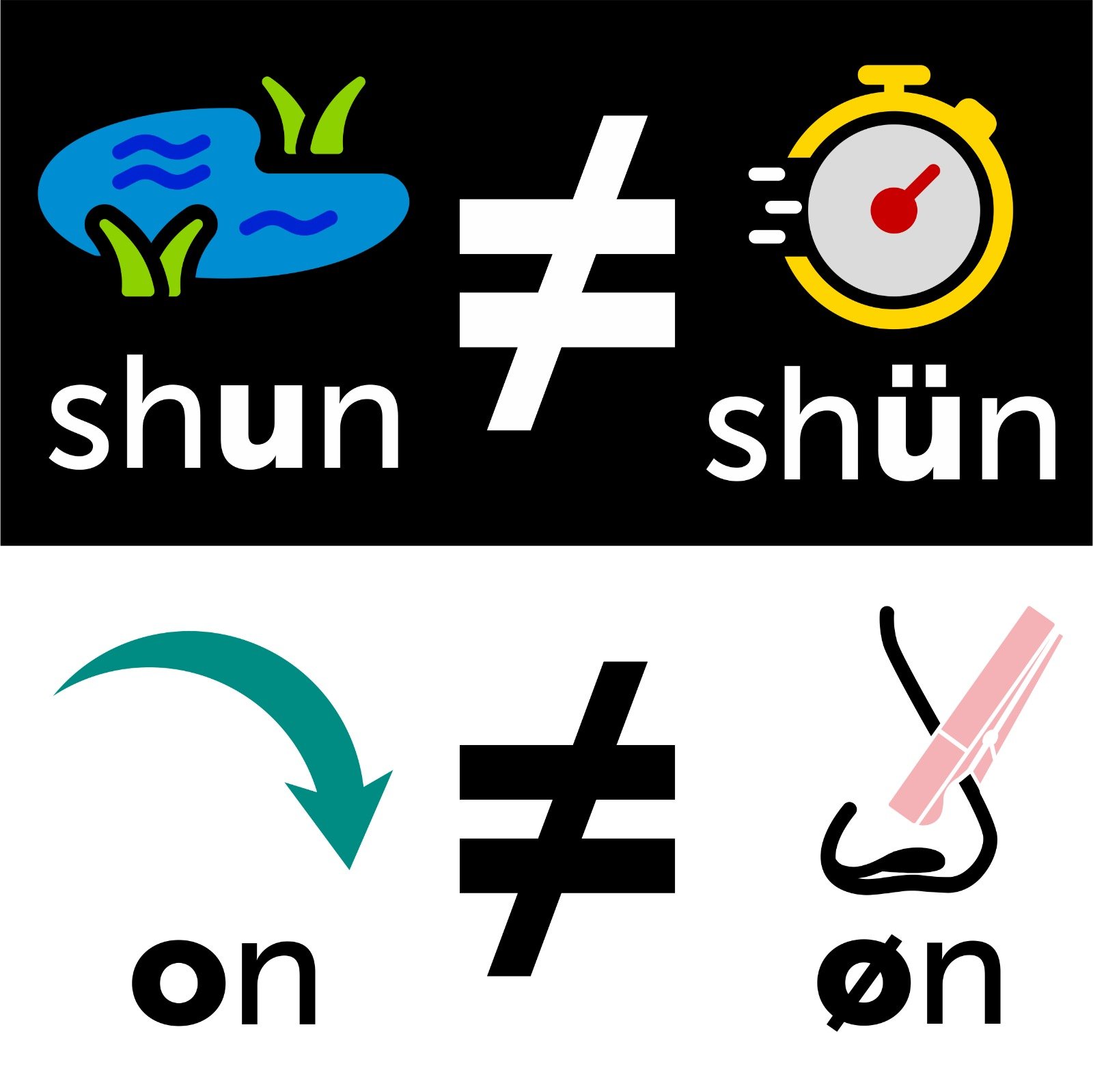y & ø
Da soonds /y/ an /ø/ is still fun aawye in Shaetlan an dey irna on dir wye oot. Techincally d’ir caaed “front roondit vowels” an d'ir maed in da sam wye at /i/ an /e/ is, excep fir da roondeen o da lips. So da onnly differ atween shin ‘front o da boddam o da laeg’ an shün ‘in a peerie start’ is at da lips is roondit wi shün. An da onnly differ atween lay (pronounced /le:/) an lø ‘listenin clossly’ (pronounced /lø:/) is at wi lø da lips is roondit. Baith Aald English an Aald Norse haed dem, da twa main ancestors o Shaetlan. Dey irna common aroond da wirld, an d’ir almist onnly fun idda Eurasian languages. Da Scandinavian languages, German an French haes dem.
Dis soonds is meaneen distinguishin an dey sud be kept apairt in dir spelleens. Tae write shun fir shün wid be wrang becis da twa wirds haes different meaneens: shun means ‘peerie loch’ but shün means ‘in a peerie start’. In da sam wye writin o fir ø wid be wrang: fir example on means ‘apø’ but øn means ‘vaam, scomfishin air’.
Da soond /ø/ can be spelt wi <ø> or <ö>. Eider spelleen is fine an some languages øses <ø> (laek Norwegian), whaaras idders øses <ö> (laek Swedish). W’ir pickit <ø> becis hit’s da symbol øsed idda International Phonetic Alphabet. Firbye dat hit’s da letter øsed bi da descendants o Wast Norse (Norwegian, Icelandic an Faroese), an in dat wye dis spelleen shaas hoo w’ir blyde tae be connekit wi wir linguistics aa trowe da Nort Altantic cultural area.

